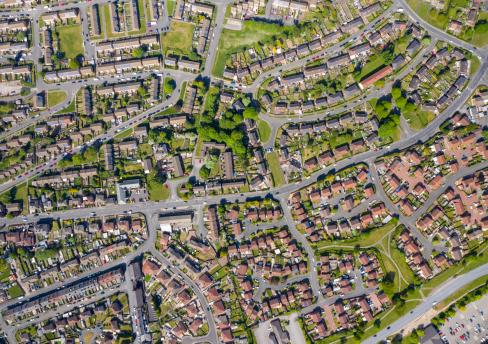
With COP26 taking place in Glasgow later this year, and the latest Scottish National Planning Framework (NPF4) set to focus even more on the environment than in years gone by, many eyes are rightly cast on the environmental impact of planning decisions.

While this focus on greener, more carbon-neutral development isn’t anything new, additional scrutiny and regulation means planners will need to begin to make more extensive considerations on the environmental impacts of planning applications, given the UK’s wider statutory Net Zero targets. The coal mine being planned for Whitehaven is one key example of where English planning authorities are being asked to make these considerations.
So, what can Scottish planners expect from the environmentally focused NPF4, a draft of which should be available for consultation in autumn later this year? And how might this change their approach to environmentally sensitive development applications?
The first main change to note will be the framework’s enhanced status. To give the NPF4 greater weight as it demands a fresh approach to addressing ambitious climate change targets, it will become part of the statutory development plan. The importance of being part of the statutory development plan is that, going forward, the NPF4 along with the planning authority's Local Development Plan will be the starting point for the decision-making process.
Planning decisions should be made in accordance with the statutory development plan unless material considerations indicate otherwise. For example, if, for some reason, a planner feels as though the NPF4 policies are not suitable for the proposed development, they will need to outline the material considerations which justify their decision to depart from the specific NPF4 terms.
The document’s greater emphasis on the environment will also require planners to incorporate policies that improve Scotland’s ‘quality of place’. The Scottish Government’s ‘20 minute neighbourhood’ vision set out in their NPF4 Position Statement is a good example of this. The vision encourages developments to significantly reduce the need to travel, outlining that homes should be planned together with everyday local infrastructure, such as schools, local shops and healthcare.
Akin to the same thinking, we can expect a strengthening of support for development in town centres along with restrictions on out-of-town retail and leisure development, to help Scotland move away from car-dependent developments and towards those that enable active travel and public transport accessibility.
The NPF4 will also focus on making the most of the old, before planning anything new. For example, with the new framework, there will be a stronger preference for reusing existing buildings before new development proceeds. The NPF4 will also aim to shift future development away from greenfield land by actively enabling the redevelopment of vacant and derelict land.
From the Scottish government to local government, the NPF4 will be a golden thread of planning policy running through to the Local Development Plans, and in turn, planning applications at all levels. And as a Scottish Government document, it will allow the government greater levels of control when it comes to influencing the framework in which local decisions will need to be determined. This may well encourage greater consistency and clarity in the planning process, but it is nonetheless an element of the NPF4 that will create tensions, as it looks as though the Scottish Government will now set out terms and targets - such as housing numbers - that were previously decided on at a local level.
While it is understandable that the Scottish Government is keen to increase its efforts in tackling significant issues like housing delivery, the perceived centralisation of planning policy will be of concern to some. Local authorities will undoubtedly feel that they are best placed to determine what is best, and achievable, in their areas for housing delivery.
As the NPF4 asks planners to think about tomorrow, and how developments will enable zero carbon living to work in practice, many large-scale developers will find that they are ahead of the curve, already planning with the outlined policies in mind. But there will be a period of adjustment for others, and undoubtedly some questions for the Scottish Government, as we set about building a better, greener future for Scotland.
The content of this webpage is for information only and is not intended to be construed as legal advice and should not be treated as a substitute for specific advice. Morton Fraser LLP accepts no responsibility for the content of any third party website to which this webpage refers. Morton Fraser LLP is authorised and regulated by the Financial Conduct Authority.









